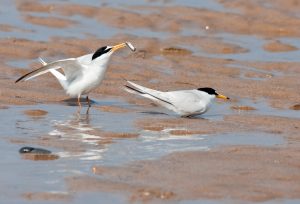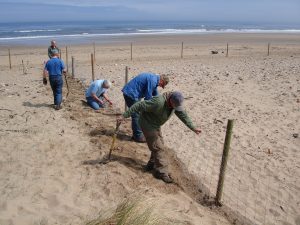Little Tern Recovery

Crimdon sits towards the southern limit of the Heritage Coast boundary within County Durham.
With its sandy beaches, Crimdon has always played an important part in linking people with their natural environment. Whether this is back in the 1920’s when Crimdon was an annual holiday spot or now as local communities and visitors use the area for recreation. In addition our wildlife has found some unique habitat opportunities for their own summer retreat!
The Little Tern, one of Britain’s rarest sea birds is one species which over recent years has taken a liking to the sands of Seaton Carew and Crimdon. Many now return annually in May from West Africa to breed on the north east coast with the potential of returning to Africa in September with the next generation. Most flock to Seaton Carew but there are still some visitors to Crimdon. This delightful chattering seabird is the UK’s smallest tern. It arrives from West Africa in May to next on the sands at Crimdon. It is noisy at its breeding colony where courtship starts with an aerial display involving the male calling and carrying a fish to attract a mate which chases him up high before he descends, gliding with wings in a ‘V’. Its vulnerable nesting sites and its decline in Europe make it an Amber List species. The Little Terns at Crimdon are carefully protected by Wardens who patrol the site throughout the breeding season (May to September). The Wardens often talk to visitors about the progress of the Terns and inform the public about keeping dogs under control and the best place to walk without disturbing these beautiful birds.

Crimdon’s Dunes
The beaches of Seaham and Crimdon are quite unique as they are the only ones with ‘golden’ sandy beaches. Crimdon has the additional landscape characteristic of sand dunes and it is this feature which, in part, attracts people to walk along the coast and provides unique habitat opportunities for our wildlife.
Getting the balance of management right so that the public can enjoy the space and wildlife can flourish is always ongoing. Since 1990, the Little Tern population has been in decline with principal threats being predation and human disturbance.
Seasonal wardens are in place at Seaton Carew where the majority of little terns visit, they help protect the Little Tern nesting site as well as educating visitors.

Volunteers helping erect little tern fencing at Crimdon, 2010
